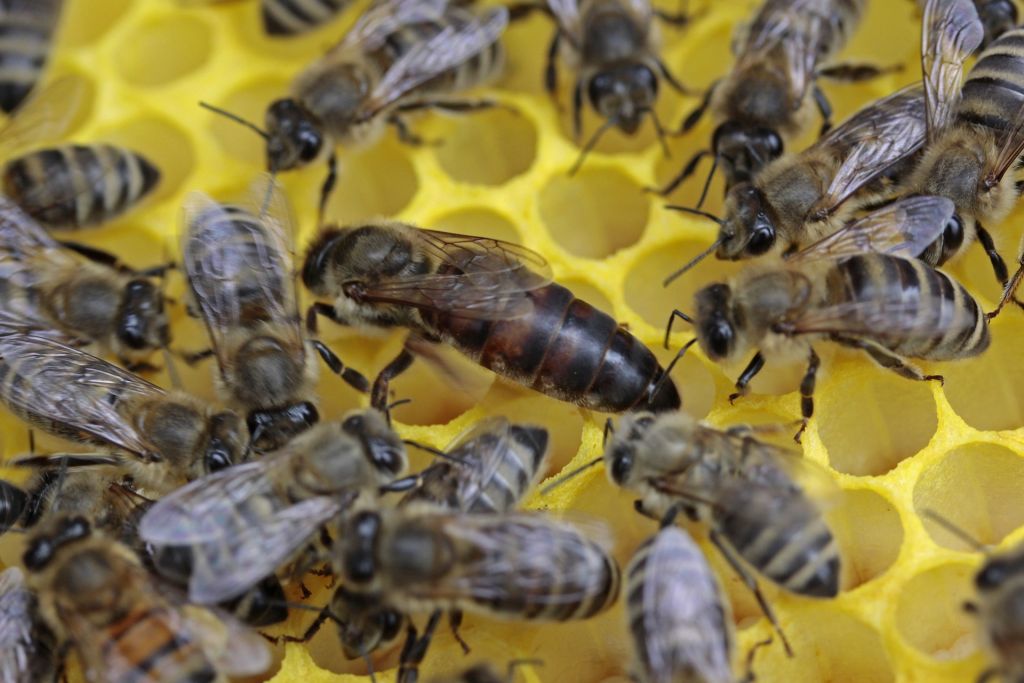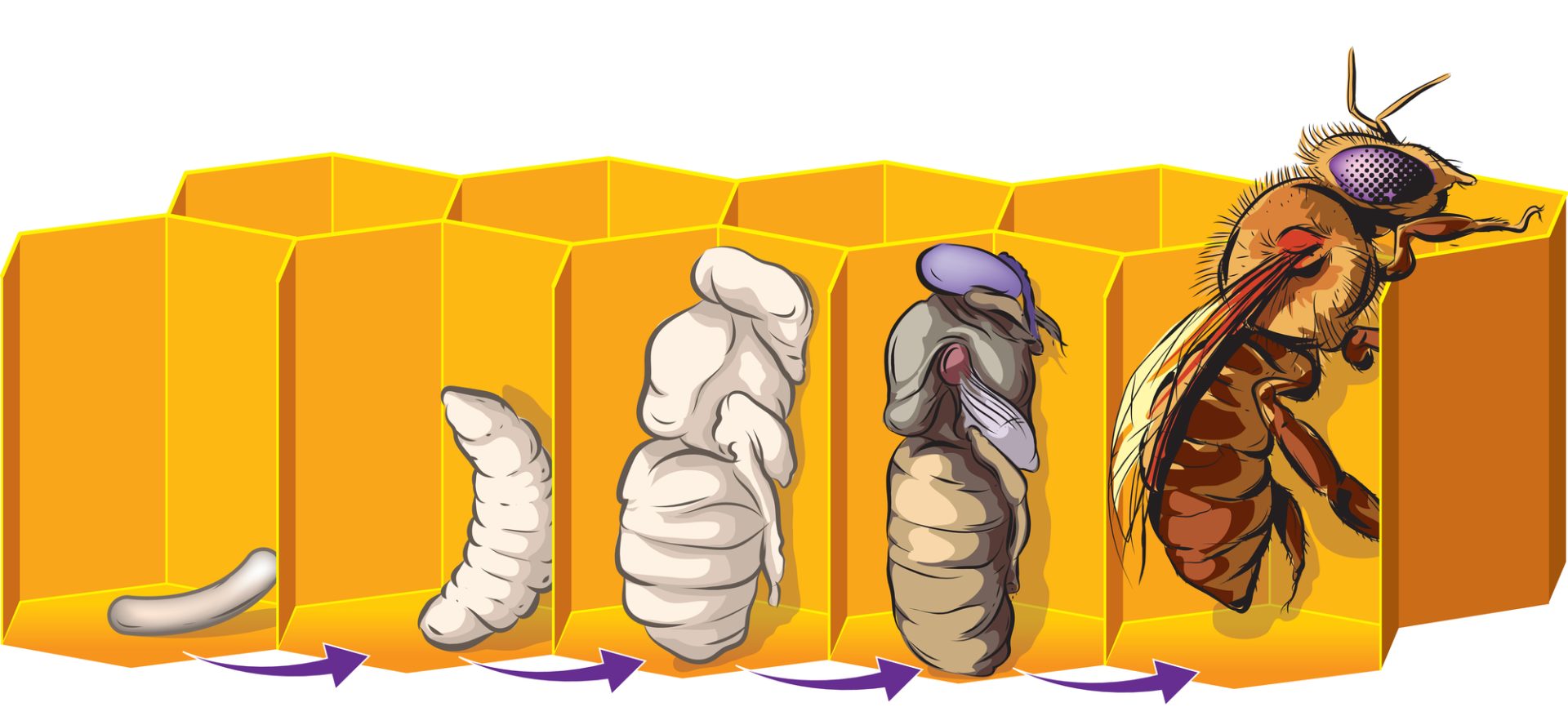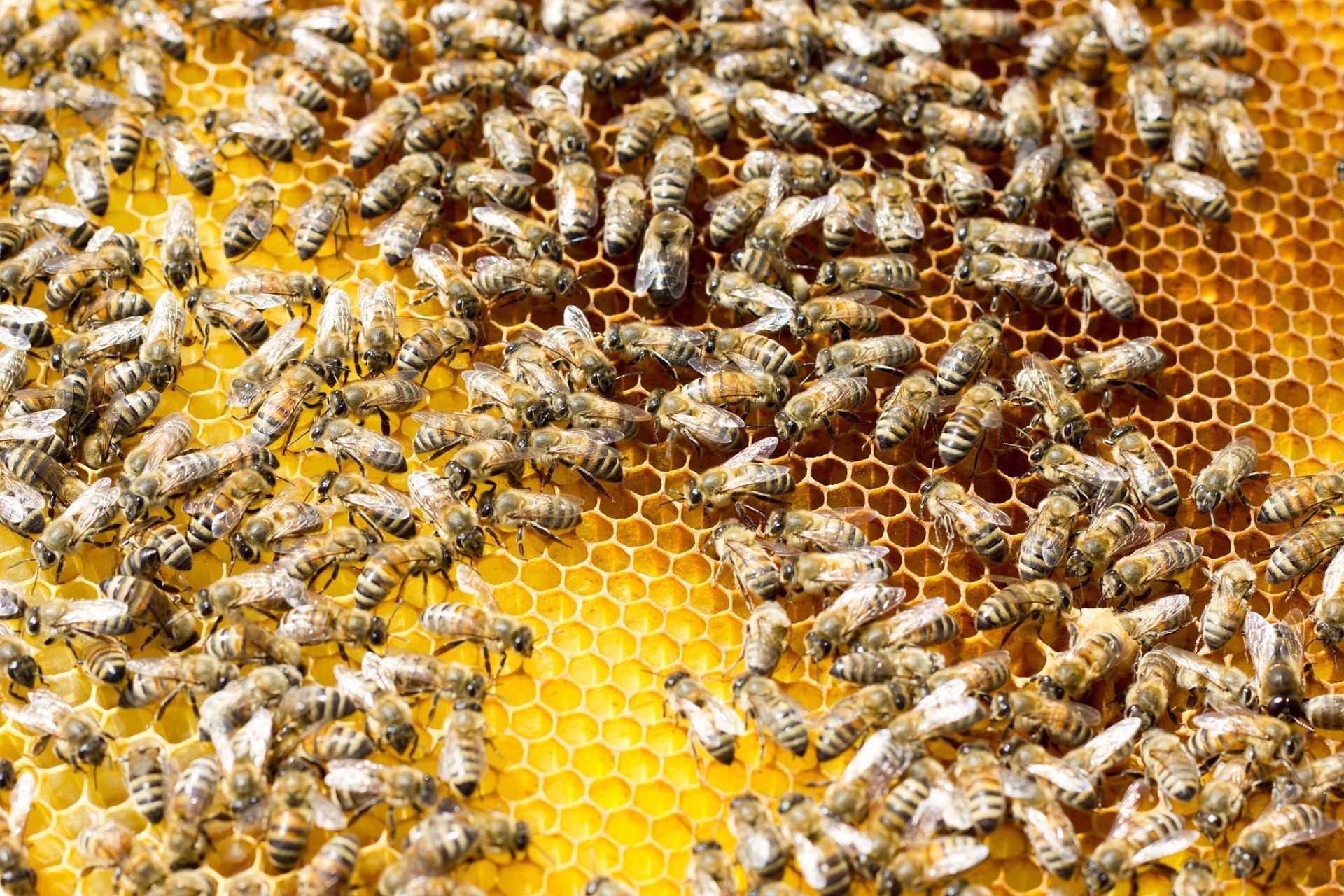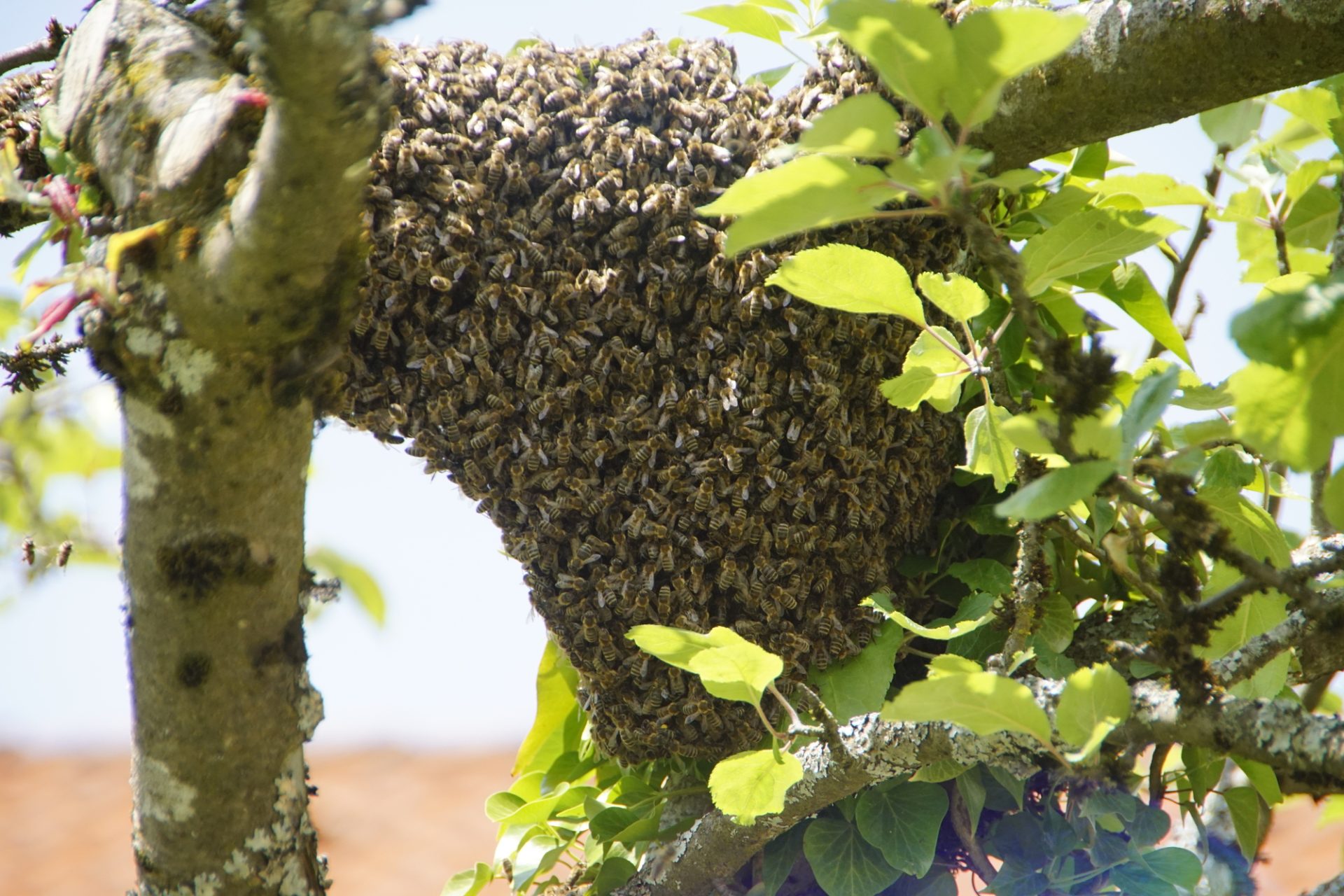If you purchase an independently reviewed item through our site, we earn an affiliate commission. Read our affiliate disclosure.
Genetic diversity and avoiding inbreeding are important in honeybees as in other organisms too. This article discusses genetic diversity in honeybees, and how they go about avoiding inbreeding. It aims to equip you with knowledge for your better appreciation of honeybees and also to make you a better beekeeper. By understanding the importance of some honeybee activities, you will be able to facilitate them better so that they take place in optimum conditions for the best outcomes. Genetic diversity has many advantages in all species due to ensuring the suppression of most of the bad genes. Good genetic diversity in honeybees also gives the members of the colony hybrid vigor.
Methods of Ensuring Genetic Diversity in Honeybees
Honeybees are social insects. They live in a colony made up of members that are closely related to each other. This causes high risk of inbreeding and losing genetic diversity. The queen bee in a honeybee colony is the only fertile female. It is largely upon her to ensure genetic diversity in her honeybee colony. The queen bee uses a combination of methods to prevent inbreeding and promote genetic diversity.
Additionally, the behavior of honeybees with respect to mating, production of brood and handling of male bees contributes to preventing inbreeding. It also promotes genetic diversity for hybrid vigor in the honeybee colony.
The recombination of parts of chromosomes during the fusion of eggs and sperm is another contributor to the genetic diversity of honeybees. Recombination in honeybees may also take place during the subsequent growth of the fertilized egg into a honeybee embryo.
Lastly, the prevention of inbreeding and promoting genetic diversity in one honeybee colony has an impact on the species as a whole. This is because each honeybee colony contributes a number of drones to mate with queen bees from other colonies in the area. The colony also periodically produces queen bees that carry the genes of both a male and female honeybee and contributes their set of genes to the larger gene pool of the honeybee species.
1. Queen Bee’s Behavior Ensures Genetic Diversity in Honeybees
In a honeybee colony, the queen bee is the only fertile female. She is tasked with mating and laying eggs in the colony. The queen bee can lay fertilized eggs or unfertilized eggs. She lays a few unfertilized eggs at a time. During some periods of time in the year, she may lay no unfertilized eggs at all. This is because unfertilized bee eggs lead to the production of male drone bees.
Drones do not help with foraging, protecting the colony and its habitat or other work maintaining the colony’s habitat in the best condition. In their lifetime, drone bees only mate with queen bees when the queen bee goes on a mating flight. They are, therefore, not very desirable in the beehive. In times when foraging is difficult and resources are scarce, there is very minimal or no production of drones in the brood of honeybees. This is especially true from late autumn to early spring. In mid-spring, there are many drones produced until it is mid-autumn when the production of drones is reduced.
When a queen bee lays a fertilized egg, it results in the production of a female worker bee. Worker bees keep the honeybee colony running. They do all the work in a beehive including foraging for resources to use in the beehive. When it is time to produce another queen bee in a colony, the current queen bee lays a fertilized egg. Once the egg hatches, worker bees feed that larva special food in a different feeding regime and cause the production of a new queen bee.
Queen bees steer the genetic composition of a honeybee colony through their mating. During her mating flight, she moves up to 3 miles from her beehive to a drone congregation area. This helps to reduce the chances of mating with a drone bee from her colony. At the drone congregation area, she mates with several male drone bees. She gets sperm from drones of different genetic makeup so that she can improve the genetic diversity of the female bees that result from her fertilized eggs. Lastly, the queen bee can perform several mating flights in a day, or in a few consecutive days. She may even go to different drone congregation areas during these consecutive days of her nuptial flights. This adds to the likelihood of mating with drones from different honeybee colonies for maximum genetic diversity.
2. Gene Recombination
Gene recombination is the crossing over of genes on segments of chromosomes during the formation of egg and sperm cells. In honeybees, recombination occurs at an unusually high rate. Research has found that the high occurrence of recombination in honeybees is important to their survival. It plays a crucial role in maintaining genetic variation in honeybees. In comparison with other species, recombination in honeybees occurs at a frequency that is higher than in any other measured animal and at more than 20 times the frequency in humans.
Recombination affects the efficiency of natural selection in promoting favorable genetic variations. In honeybees, the genes that are involved in adaptation to the environment undergo more recombination.
3. Contributing Genes to the Genetic Pool of the Species
Each honeybee colony has an effect on the genetics of the species as a whole. In a honeybee colony, the production of drone bees is the primary way of sharing genes with the wider species. Secondly, the colony periodically produces queen bees that go off to establish new honeybee colonies. These two occurrences allow a honeybee colony to contribute to the available gene pool for the species. It helps to keep the gene pool updated with the best combinations of genes that the honeybee species can draw from.
This means of ensuring genetic diversity in honeybees is more effective when there are wild colonies of honeybees. The wild colonies develop mutations that are useful in fighting diseases and infestations by pests and parasites. They also get genetic mutations that help them to survive better in the environment of an area. When wild colonies of honeybees with such genetic characteristics contribute genes to the bees in beekeeping operations, they help the bees in the beekeeping operation to become better in various ways. It is therefore good to allow the periodic swarming of honeybee colonies in your beekeeping operation so that the bees that swarm away establish wild honeybee colonies. Conservation beekeepers often allow and encourage swarming in their beekeeping so that there are many honeybee colonies in the wild.
General Honeybee Behavior that Prevents Inbreeding
Researchers and beekeepers have identified several behaviors of honeybees that prevent inbreeding and promote genetic diversity in honeybee colonies. These behaviors are related to the mating of honeybees, the production of bee brood and how honeybees handle male bees among others. Collectively, they help with genetic diversity in both the individual honeybee colonies and the species as a whole.
1. Mating
During mating in honeybees, only one female honeybee in a colony mate with male bees. The queen bee mates with 12-14 male bees on average. Some have been observed to mate with 6-24 drone bees. The queen bee then lays all the eggs that produce members of the honeybee colony. It results in female honeybees in the beehive at any time having different fathers.
They are genetically diverse because the queen bee receives sperm from many male bees. Even when the queen bee lays a fertilized egg which is then used to raise a new queen bee, the resulting queen bee shares genetics with only a fraction of the worker bees in the beehive. In the lifetime of the new queen bee, she may be passing on the genes of her father, or mother with equal chances to the fertilized eggs that she lays.
2. Brood Production
Brood production in honeybees is controlled to ensure that there are many female worker bees produced. Worker bees ensure the survival of the honeybee colony by doing all the physical work for sustaining and maintaining the honeybee colony. The production of male drone bees is limited so a single beehive does not produce too many drone bees. In turn, this reduces the chances of the drones from a single honeybee colony mating with many queen bees in the area.
The genetics of one honeybee colony is, therefore, spread only to one or a few other honeybee colonies through drones mating with queen bees. This is of great importance when the genetics of a colony are not very desirable. Their spread is limited and does not affect a large number of members of the honeybee species.
3. Handling of Male Honeybees
Drone bees in a honeybee colony face some hostility and are not in large numbers. This is because drone bees do not contribute to the collection of resources for the beehive, the maintenance of the beehive or the protection of the honeybee colony. Their only work is to mate with queen bees at least once in their lifetime. Worker bees often kick out drone bees from the beehive for various reasons.
Additionally, drone bees from another honeybee colony are often allowed to spend a night or two in a new beehive before they must leave. This behavior in the handling of drone bees allows them to move great distances from their beehive and mate with queen bees from far-off honeybee colonies. Additionally, kicking out the drone bees causes them to die frequently so that their genetics are not easily passed on to subsequent generations of honeybees.
4. Having Drone Congregation Areas
For mating with queen bees, drone bees go to drone congregation areas. These are areas where there are many drone bees flying around. One area can have between 8,000 and 20,000 drone bees at a time. The queen bee that is on a mating flight goes to a drone congregation area and mates with many drone bees. Having many drone bees in the congregation area ensures that any drone in the area has little chance of mating with the available queen bee. It also reduces the chances of more than one drone bee from a single honeybee colony mating with a single queen bee.
5. Drone Bee Death After Mating
Male drone bees die after mating with a queen bee. The endophallus of the drone bee remains stuck onto the underside of the queen bee’s abdomen. A drone that has successfully mounted a queen bee and ejaculated his semen inside her will try getting off of the queen bee and flies off. The endophallus that is stuck onto the queen bee causes some of the drone bee’s abdomen to tear off. This physical injury results in the drone not being able to inseminate another queen bee. Additionally, it causes the death of the drone bee soon after successfully mating one queen bee.
This removes the drone bee from the number of male bees that have a chance at contributing to the gene pool in future generations of honeybees. It ensures that one drone bee does not excessively spread his genes to many honeybee colonies. Instead, the genes in a single honeybee colony must come from many different male drone bees.
Negative Results of Inbreeding
Inbreeding is a dangerous occurrence in any species. It causes a fall in the genetic diversity of the species. In honeybees, inbreeding causes a fall in important characteristics that are useful for the survival of honeybees. It leaves the honeybees susceptible to diseases, pest and parasite infestations, and unable to adapt well to their environment.
Additionally, inbreeding in honeybees has an impact on grooming behavior, as well as foraging behavior. Honeybees in an inbred colony show less grooming behavior and do not forage for beehive resources as aggressively as in colonies that do not have inbreeding.
Lastly, inbreeding can cause deformities to arise in honeybees. This occurs when recessive genes are expressed. In the presence of dominant genes, the recessive genes are not expressed. Hybrid vigor occurs when a recessive gene is prevented from being expressed due to the presence of a dominant gene.
Due to these negative effects of inbreeding and loss of genetic diversity, it is in the interest of honeybees to breed in a way that ensures the species does not decline in its genetic strengths.
Genetic Aspects that Contribute to Honeybee Population Declines
One of the factors causing the decline of honeybee populations is the genetic aspect. Additionally, beekeepers should welcome and work with researchers in various fields that are helping in understanding the causes of honeybee population decline and the solutions that can be applied to the problem. Researchers in genetic aspects of honeybee declines have published many findings that beekeepers should familiarize themselves with and use in their beekeeping operations. The findings and solutions are useful for both commercial and conservation beekeepers.
The 3 major aspects of genetics that are contributing to honeybee decline are:
1. Complementary Sex Determination
In honeybees, the females are diploid whereas the males are haploid. This simply means that female honeybees have two sets of chromosomes whereas the males have a single set of chromosomes. Sex in honeybees is determined by a single gene. This results in the production of females that do not live for long. It also causes significant declines in the population of bees. To counteract this effect of complementary sex determination, queen bees in honeybee colonies must lay a large number of eggs to ensure colony continuity.
2. Inbreeding Depression
Inbreeding depression is a big threat to small populations of organisms. When a population does not have genetic exchanges with new populations, it suffers a number of negative consequences. One of the characteristics that are quickly affected by inbreeding depression in honeybees is fitness. The fitness traits of honeybees are important for the survival of honeybees in different environments. When the fitness traits are affected by inbreeding, the ability of honeybee colonies to thrive in some environments is greatly reduced. Inbreeding depression poses one of the biggest threats to honeybees and could easily lead to the extinction of honeybees.
3. Loss of Genetic Diversity and Evolutionary Potential
Populations including honeybees need genetic diversity to adapt to changing environments. Large populations are more capable of achieving genetic diversity than small populations. The small populations experience more genetic drift over time and maintain less genetic diversity.
Honeybees have been experiencing falls in their population and need restoration to population numbers that allow for optimum genetic diversity. Further declines in honeybee populations risk leaving honeybees with limited potential to evolve as a species to changes in their environment. Important environmental changes to which honeybees need to be able to adapt include diseases, climate change, pesticides and contaminants among others. If they cannot adapt to these changes, honeybees risk extinction in the long term.
Beekeepers’ Contributions to Honeybee Genetic Diversity
Beekeepers are a leading group of people that are making many contributions to the genetic diversity of honeybees. While some are improving the genetic diversity of the honeybees, others may be causing poor genetic diversity. It is important that beekeepers carry out the best breeding practices in their honeybee colonies. They should avoid inbreeding honeybees under their care. Commercial beekeepers benefit a lot when they work in close cooperation with conservation beekeepers in their area.
Conservation beekeepers provide an essential service to the honeybee species and commercial beekeepers by encouraging the establishment of honeybee colonies in the wild. This is useful for the genetic diversity of honeybees at a time when honeybee populations are under pressure and declining.
Conservation Beekeeping
Conservation beekeeping is one of the practices that are contributing to genetic diversity in honeybees. It is able to do this through various avenues that may not be easy for commercial beekeepers. The rearing of bees for conservation purposes also faces many challenges that discourage many people from engaging in the practice.
The various ways in which conservation beekeeping is contributing to honeybee genetic diversity are:
1. Providing Breeding Stock to Beekeepers
Conservation beekeepers readily provide breeding stock to commercial beekeepers. This can be in the form of package bees to start new honeybee colonies or queen bees to ensure colony continuity. In a commercial beekeeping operation, there is high demand for breeding stock, especially queen bees that must be virile and healthy. Commercial beekeepers may not be able to carry out the best honeybee breeding practices but conservation beekeepers have a lot of time to do it if they want to. This allows conservation beekeepers to have high-quality bees that have great genetic diversity. By providing breeding stock to commercial beekeepers, they contribute to the spread of the best genes in honeybees. Queen bees that you get from conservation beekeepers can be artificially inseminated or mated naturally.
2. Encouraging Wild Honeybee Colonies
Conservation beekeepers encourage the presence of honeybee colonies in the wild. They do this by allowing splitting and swarming to occur in their honeybee colonies. The swarms that form from the colonies of conservation beekeepers establish new honeybee colonies in the wild. They are not cared for by anyone. As a result, the colonies in the wild develop genetic adaptations that help them to survive in the wild. Some adaptations include grooming behavior, chasing out pests and increased foraging behavior.
These adaptations are useful for honeybee colonies in commercial beekeeping operations. They are easily passed between honeybee populations through the natural mating of honeybees. In your beekeeping operation, you may thus stand to benefit from better genetic diversity in your honeybee colonies if you allow queen bees to be inseminated naturally instead of artificially.
3. Creating Awareness about Honeybee Population Declines
Conservation beekeepers are usually in beekeeping for their appreciation of the challenges that honeybees are facing. They carry out various activities to reduce the pressure on honeybee populations. Additionally, conservation beekeepers are great at spreading the word about the need to pay attention to the plight of honeybees and do something about it. Conservation beekeepers are thus useful in the spreading of awareness about honeybee population declines and the solutions that can be used to reverse the trend. They do this through various methods including operating beekeeping resource centers and donating to beekeeping conservation efforts among others.
Conclusion
The composition of honeybee colonies puts the species at risk of losing genetic diversity. Inbreeding is also a high risk in honeybees. All members of a colony are from the same queen bee. It is important for honeybees to avoid inbreeding and maintain hybrid vigor in the honeybee colony and the species at large.
Honeybees have developed several methods in the process of their evolution to ensure that both goals of preventing inbreeding and ensuring genetic diversity are achieved. Use the information in this article about how honeybees avoid inbreeding and ensure genetic diversity to improve your beekeeping practice and get high yields from your honeybee colonies.
 BeeKeepClub Resources and Guides for Beekeepers
BeeKeepClub Resources and Guides for Beekeepers




